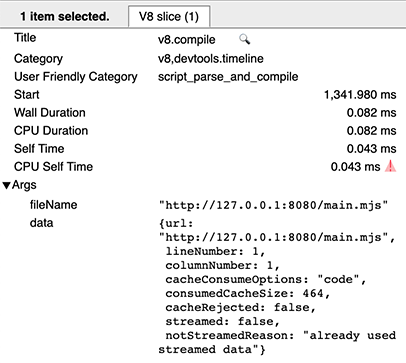How to Use Automated Scripts for Performance Optimization. Top 5 Scripts for Automating Performance Enhancements
Introduction
In the ever-evolving digital landscape, speed and efficiency are critical for the success of any online endeavor. Whether you’re running a blog, an e-commerce site, or a complex web application, performance optimization is key. Slow load times and inefficient processes can drive users away, reducing engagement and conversions. That’s where automated scripts come into play. These nifty tools can enhance your website’s performance, streamline operations, and ensure a smooth user experience. In this article, we’ll delve into the world of automated scripts for performance optimization, exploring the top five scripts that can revolutionize your online presence. For more articles visit our WEBSITE.
Why Automate Performance Optimization?
The Importance of Speed in the Digital Age
Speed is everything in the digital world. Users expect websites to load in the blink of an eye. According to Google, a one-second delay in page load time can lead to a 7% reduction in conversions. That’s huge! Speed influences everything from user experience to SEO rankings. Fast websites not only retain visitors but also rank higher on search engine results pages (SERPs), driving more organic traffic. In the cutthroat online marketplace, speed is your competitive edge.
Manual vs. Automated Optimization
Manually optimizing your website for performance can be a daunting and time-consuming task. It involves sifting through code, optimizing images, minifying files, and ensuring everything runs smoothly. This process is not only labor-intensive but also prone to human error. On the other hand, automated scripts can perform these tasks efficiently and accurately. They can be scheduled to run at regular intervals, ensuring your website is always optimized without the need for constant manual intervention. Automation is the future of performance optimization, making it accessible even to those without extensive technical knowledge.
What Are Automated Scripts?

Definition and Purpose
Automated scripts are pre-written sets of instructions that perform specific tasks without human intervention. In the context of performance optimization, these scripts automate processes such as image compression, code minification, lazy loading, database optimization, and caching. Their primary purpose is to enhance website performance by making repetitive tasks more efficient and reducing the potential for human error.
How Automated Scripts Work
Automated scripts operate based on predefined rules and conditions. They can be triggered by specific events, scheduled to run at particular times, or executed manually. These scripts interact with your website’s backend, performing tasks that optimize various aspects of your site’s performance. For instance, an image compression script will automatically compress images as they are uploaded, reducing file sizes without compromising quality. Similarly, a code minification script will streamline your code, removing unnecessary characters and spaces to speed up load times.
Benefits of Using Automated Scripts for Performance Optimization
Efficiency and Time-Saving
One of the most significant benefits of automated scripts is the time they save. By automating repetitive tasks, you free up valuable time to focus on other critical aspects of your business. Imagine never having to manually compress images or minify code again – automated scripts handle these tasks effortlessly, ensuring your site is always running at peak performance.
Consistency and Accuracy
Human error is inevitable, especially when performing repetitive tasks. Automated scripts eliminate this risk by executing tasks with pinpoint accuracy every time. This consistency ensures that your website remains optimized, providing a seamless user experience. Automated scripts follow the same set of rules and conditions without deviation, ensuring reliable performance.
Scalability
As your website grows, so do the demands on its performance. Manual optimization becomes increasingly impractical as your site expands. Automated scripts, however, scale effortlessly with your website. Whether you’re dealing with a few images or thousands, automated scripts handle the workload efficiently, maintaining optimal performance regardless of scale.
Top 5 Scripts for Automating Performance Enhancements
Script 1: Image Compression Script

Images are often the largest files on a website, significantly affecting load times. An image compression script automatically reduces the file size of images without compromising quality. Tools like ImageMagick or TinyPNG can be integrated into your workflow to compress images as they are uploaded. This ensures that all images on your site are optimized, improving load times and enhancing user experience.
Script 2: Code Minification Script

Code minification is the process of removing unnecessary characters, spaces, and comments from your code to reduce file size and improve load times. A code minification script can automatically minify HTML, CSS, and JavaScript files, ensuring your code is as efficient as possible. Tools like UglifyJS for JavaScript and cssnano for CSS are popular choices for this task.
Script 3: Lazy Loading Script

Lazy loading is a technique that delays the loading of non-critical resources until they are needed. A lazy loading script ensures that images and videos are only loaded when they enter the viewport, reducing initial load times and improving performance. Libraries like LazyLoad or plugins like WP Rocket for WordPress can automate this process, enhancing the user experience on your site.
Script 4: Database Optimization Script

A well-optimized database is crucial for fast load times and efficient data retrieval. Over time, databases can become cluttered with redundant data, slowing down your site. A database optimization script can clean up and organize your database, removing unnecessary data and optimizing queries. Tools like WP-Optimize for WordPress or custom SQL scripts can be used to automate this process.
Script 5: Caching Script

Caching stores copies of your site’s files in a temporary storage location, allowing for faster access and load times. A caching script can automatically manage your site’s cache, ensuring that the most frequently accessed files are readily available. Tools like Varnish or caching plugins like W3 Total Cache for WordPress can automate caching, significantly improving your site’s performance.
How to Implement Automated Scripts
Selecting the Right Script for Your Needs
Choosing the right automated script depends on your specific needs and the nature of your website. Assess which areas of your site need optimization and select scripts that address those needs. For instance, if your site is image-heavy, an image compression script will be invaluable. If you have a lot of dynamic content, a caching script will be essential.
Integration with Existing Systems
Integrating automated scripts with your existing systems requires careful planning and execution. Ensure that the scripts you choose are compatible with your current setup and can be easily integrated without disrupting your site’s functionality. Test the scripts in a staging environment before deploying them to your live site to ensure smooth integration.
Monitoring and Maintenance
Automated scripts require regular monitoring and maintenance to ensure they continue to function correctly. Keep an eye on their performance and make necessary adjustments as your site evolves. Regular updates and maintenance checks will ensure that your scripts remain effective and your site continues to perform optimally.
Potential Challenges and Solutions
Compatibility Issues
Compatibility issues can arise when integrating automated scripts with your existing systems. To avoid this, thoroughly test scripts in a staging environment and ensure they are compatible with your site’s technology stack. Regular updates and thorough documentation can also help mitigate compatibility issues.
Security Concerns
Automated scripts can introduce security vulnerabilities if not implemented correctly. Ensure that the scripts you use are from reputable sources and regularly updated to address security concerns. Implement security best practices, such as regular audits and monitoring, to protect your site from potential threats.
Troubleshooting Common Problems
Automated scripts can sometimes encounter issues that require troubleshooting. Common problems include script errors, performance issues, and compatibility conflicts. Have a troubleshooting plan in place and utilize available resources, such as documentation and support forums, to resolve issues promptly.
Conclusion
Automated scripts are powerful tools that can significantly enhance your website’s performance. By automating repetitive tasks, these scripts save time, ensure consistency, and scale with your site’s growth. From image compression to caching, automated scripts cover a wide range of optimization tasks, ensuring your site runs smoothly and efficiently. While there are potential challenges, careful planning, regular maintenance, and proactive troubleshooting can help you overcome them. Embrace automated scripts and take your website’s performance to the next level.
FAQs
Q1: What are automated scripts?
A: Automated scripts are pre-written sets of instructions that perform specific tasks without human intervention, often used to optimize website performance.
Q2: How do automated scripts improve website performance?
A: They automate repetitive tasks like image compression, code minification, and caching, ensuring your site runs efficiently and quickly.
Q3: What are some popular tools for automating performance optimization?
A: Popular tools include ImageMagick for image compression, UglifyJS for code minification, LazyLoad for lazy loading, WP-Optimize for database optimization, and Varnish for caching.
Q4: Are there any risks associated with using automated scripts?
A: Potential risks include compatibility issues and security vulnerabilities. Thorough testing and regular maintenance can mitigate these risks.
Q5: How can I monitor the effectiveness of automated scripts?
A: Regularly check the performance of your site, monitor script logs, and adjust settings as needed to ensure optimal performance.
Q6: Can automated scripts be customized to fit my specific needs?
A: Yes, many automated scripts can be customized to suit the unique requirements of your website, ensuring tailored performance optimization.

